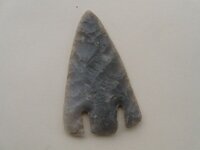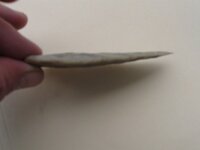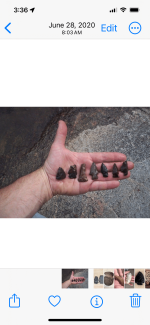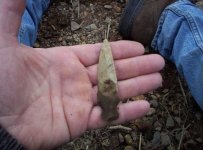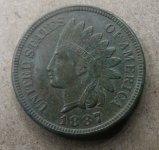naturegirl
Bronze Member
- Mar 21, 2009
- 2,356
- 402
Hi y'all! Newbie here, second attempt at posting, apologies if both attempts show up. I found this spear(?) head in NE okla. It's 3 1/2" long x 2" wide, transparent along the thin edges with dark spots in the transparent part. Can't see the dark spots un less you hold it up to the light. From online reading, I guess it to be a Calf Creek made of frisco chert. What say you? I whooped, I hollared, I danced, and got down on my kees to thank the Lord when I found it. Boy that was fun!
naturegirl
naturegirl
Amazon Forum Fav 👍
Attachments
Upvote
0


